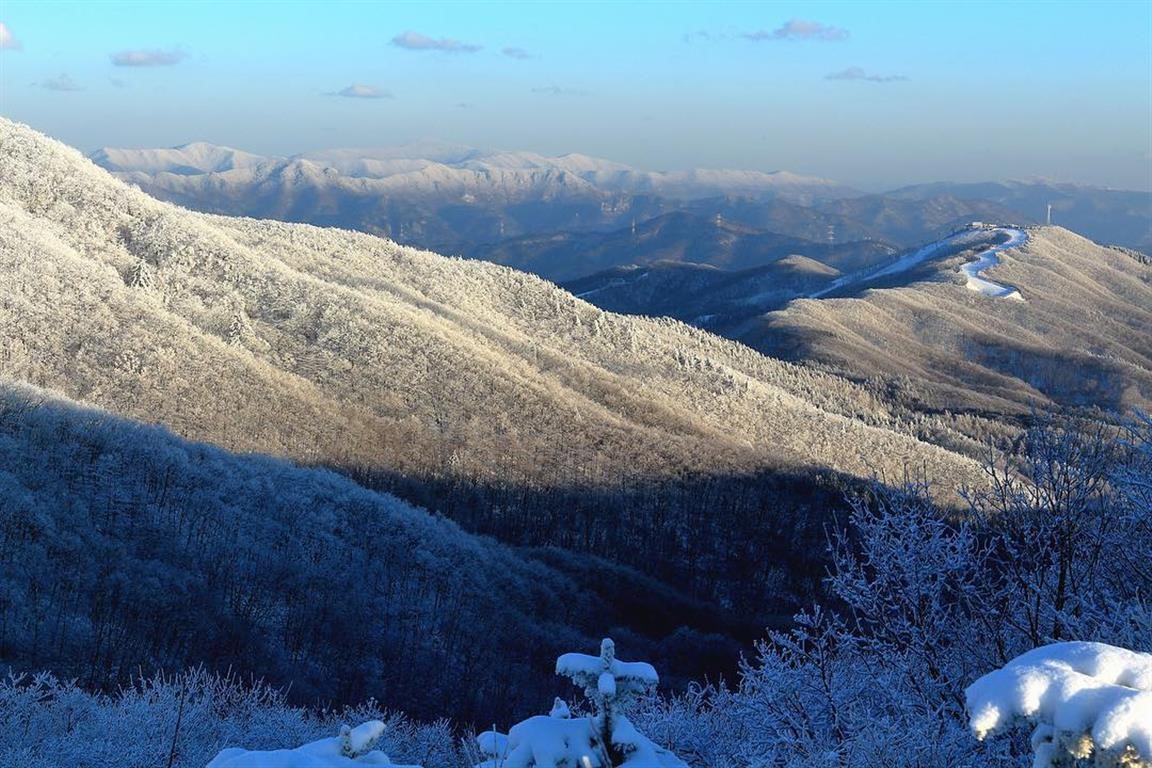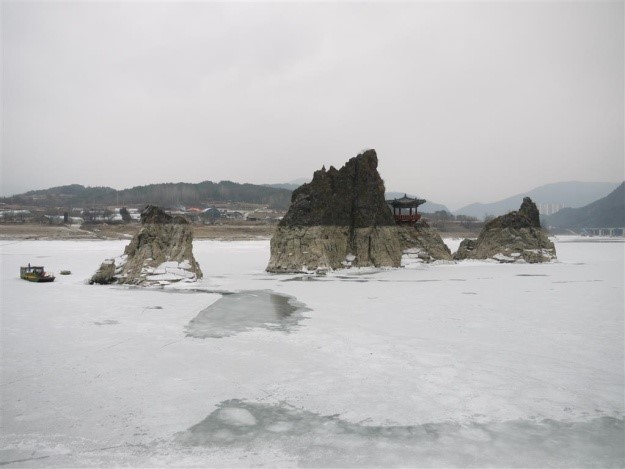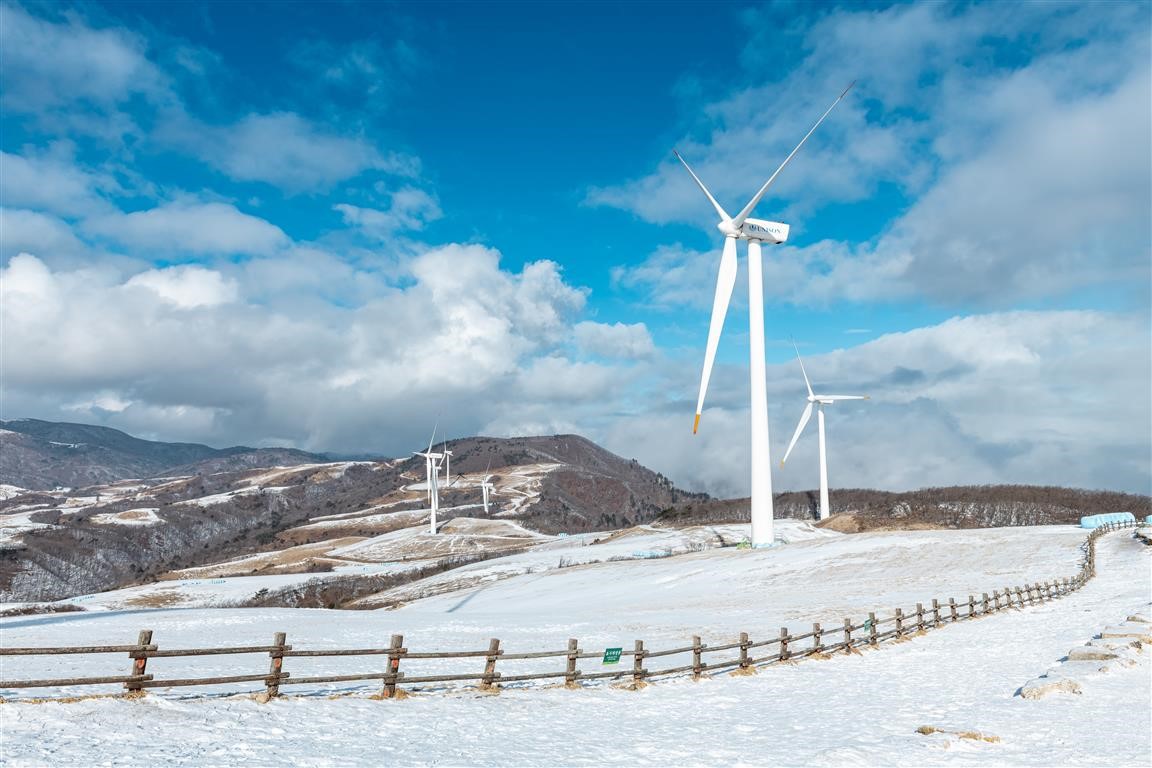- 한국어
- English
- 日本語
- 中文
- العربية
- Español
- Français
- Deutsch
- Pусский
- Tiếng Việt
- Indonesian
By Honorary Reporter Dayviana Diaz from Cuba
Photo = Fickr
With mostly mountainous terrain, Korea is known for its excellent skiing and snowboarding venues. The most popular area for winter sports is Pyeongchang-gun County, Gangwon-do Province, whose advanced winter sports facilities were developed to host the 2018 Winter Olympics. So it is no wonder that the following five places to enjoy snow during the Korean winter are all in the eastern province.

Wondaeri Birch Forest (Wikimedia Commons)
Wondae-ri Birch Forest
"A forest out of a fairy tale" is a fitting description of this forest during winter. Located in the province's Inje-gun County, Wondae-ri Birch Forest evokes tranquility and spiritual peace spurred by nature, and its white birch trees are symbols of renewal and purification amid snow. Along with snow covering the forest floor, the white birch trees soar into the sky to create a beautiful sight. The forest has three routes for mountain hiking: birch, healing and exploration.

Taegisan Mountain (Flickr account of Seong Min)
Taegisan Mountain
Meaning "great spirit" in Korean, Taejisan Mountain is the highest peak of Hoengseong-gun County at 1,261 m high. Its hiking courses and beautiful landscapes are popular throughout the year, especially in winter. Other nearby attractions are the Buddhist temple of Bongboksa, which was established during the Silla Dynasty (57 B.C.-A.D. 935), and the mineral spring Simsanyugok.

Dodamsambong Peaks (Flickr account of Andrea)
Dodamsambong Peaks
Rising above the Namhangang River in Danyang-gun County, Chungcheongbuk-do Province, the three peaks of Dodamsambong embody a colorful legend. The largest peak is Janggunbong (Husband Rock), the rock on the left Cheopbong (Mistress Rock), which appears to be prodding the former rock, and finally Cheobong (Wife Rock) on the right. The legend says the three rocks represent a wife who rejects her husband after discovering that he sought a concubine to bear him a son. The heavens are said to have seen this and turned them to stone. The area around the peaks does not allow skiing but has other attractions such as a pavilion on the highest peak and a music fountain.

Deogyusan Mountain (Flickr account of Kim Gil-ho)
Deogyusan Mountain
Located between the provinces of Jeollabuk-do and Gyeongsangnam-do, Deogyusan Mountain is popular for its crystal-clear snow and its fairytale-like scenes, relics and hidden temples. The best views in winter are from Seolchunbong Peak (1,525 m), the second highest on the mountain and one of its most famous tourist attractions. Those wishing to ski can do so at Muju Deogyusan Resort.

Daegwallyeong Sky Ranch (Flickr account of Kim Tae-hee)
Daegwallyeong Sky Ranch
Established in 1974, Daegwallyeong Sky Ranch is a protected reserve where Korean and Holstein cows are raised. It produces more than 1,400 tons of high-quality milk and beef per year. Daegwallyeong is often called "the Alps of Korea" given its elevation of 700 m and favorable snow conditions on the mountain for winter activities. The annual Daegwallyeong Snow Festival is held in the village of Hoenggye-ri in Pyeongchang-gun's Daegwanryeong-myeon Township.
enny0611@korea.kr
*This article is written by a Korea.net Honorary Reporter. Our group of Honorary Reporters are from all around the world, and they share with Korea.net their love and passion for all things Korean.